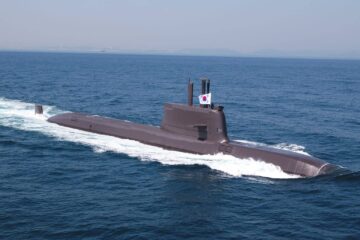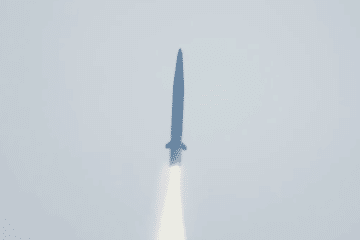The ship was envisaged as a small nimble platform that would strengthen special operations capability near the nation’s littorals. However, the program has hit several legislative barriers in recent months and is at risk of being canceled altogether.
Juho Lee story with additional reporting by Xavier Vavasseur
In 2008, the ROKN requested a fast transport vessel with stealth capabilities that would act as a “mothership” and be able to deploy smaller landing craft for special operations conducted by its Special Warfare Flotilla. The Special Warfare Support Ship and landing craft deployed from it will be designed to complement one another and maximize combat effectiveness.

The design of the ships have not been finalized yet. However, the mothership is expected to resemble existing military transport vessels, such as the Spearhead-class expeditionary fast transport ship in service with the U.S. Navy. In addition, according to local media BizHankook, the transport ship will be equipped with four large gas turbines, similar to the ones on the ROKN’s escort vessels. This would provide the Special Warfare Support Ship with high speed. BizHankook also said that the landing craft will be able to operate both below and above the surface of the water. Images of the “landing craft” concept released by South Korea’s Defense Acquisition Program Administration (DAPA) shows a design closely resembling the “Carrier Seal” swimmer delivery vehicle (SDV) by British company James Fisher and Sons plc (JFD).
Progress on the program accelerated following the North Korean bombardment of Yeonpyeong in 2010. Daewoo Shipbuilding & Marine Engineering (DSME) was awarded a contract for the development of the transport ship in 2012. The ROKN plans to award the contract for the landing craft to several other smaller companies. The initial plan was to acquire around eight Special Warfare Support Ships and 50 to 60 landing craft. This plan has been scaled down to 4 “motherships” and 20 landing craft. The estimated cost of development and delivery of these ships is KRW 1.25 trillion (USD 1.05 billion) as of 2021.

Not everyone supports the program. In fact, it has come to a standstill in the last few months due to opposition. In February 2020, the Korea Institute for Defense Analyses criticized the program for the “financially unfeasible” high cost of the landing craft. Critics point out that financial uncertainty surrounding the landing craft puts the future of the entire program in doubt because the mothership would serve no purpose without the former. As a result, the National Assembly denied KRW 22.7 billion requested by the ROKN for the program in 2021. The situation is unlikely to get better in 2022, with the National Assembly only allocating KRW 66 million (USD 55,299), KRW 1.2 billion (USD 1 million) less than the budget requested by the ROKN.
Local media has predicted that the government will come to a decision on the future of the program soon. It may decide to carry on with the program, look to procure alternatives from abroad, or cancel the program altogether.






